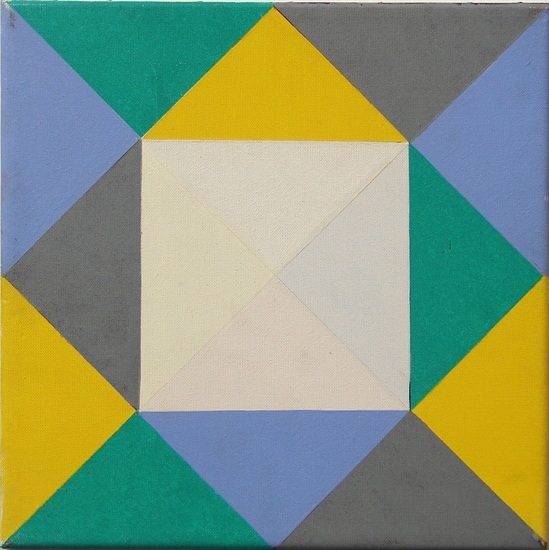Designers You Should Know: Anton Stankowski

“For him, design was a process, and at the beginning of every design process was not invention, but a critical exploration of the real givens”
–The Design Theory, Curator: Peter von Kornatzki
Maybe it has to do with Europe’s long and rich history and association with art. Or maybe it’s that Europeans just have more of an appreciation for aesthetics and good design, who knows. But chances are If you are from Germany you would most likely be familiar with Anton Stankowski’s work, a guy who started out as a decorative church painter and went on to become one of the world’s most admired graphic design heroes. His design was a process, and his approach was practical and functional, not just artistic.
Anton Stankowski was born on 18 June 1906 in Gelsenkirchen, Germany. He showed intense creative talent at a young age and served a three year apprenticeship with Max Burchartz at the Folkwangschule in Essen. It wasn’t long before a young Anton was asked to come work at Max Dalang’s famous advertising studio in Zurich.

This was an important time for Stankowski as he would go on to develop an original Theory of Design and pioneer Constructive Graphic Art. Typical Stankowski designs attempted to illustrate processes or behaviours rather than objects. Such experiments resulted in the use of fractal-like structures long before their popularisation by Benoît Mandelbrot in 1975.

Stankowski’s work walked the fine line between fine art and applied art. He was heavily influenced by the work of painters like Piet Mondrian, Theo van Doesburg, Malevich and Kandinsky.


Stankowski is very well known for his important design concepts for Deutsche Bank and the Münchner Rück insurance company. But as time went on, Stankowski increasingly concentrated on painting, devoting himself to it completely until his death in 1998.



Further Reading:
Yesss! Intense shapes and brilliant colors. I would love to see the process he went through to get to those final logos and illustrations. Great post Jesse. peace
Thanks man! I know how you feel, when I encounter artists and designers of this caliber I think that I would love to crawl inside their heads and walk around to see what they're thinking.
What is the name of the book that you show in the second example?